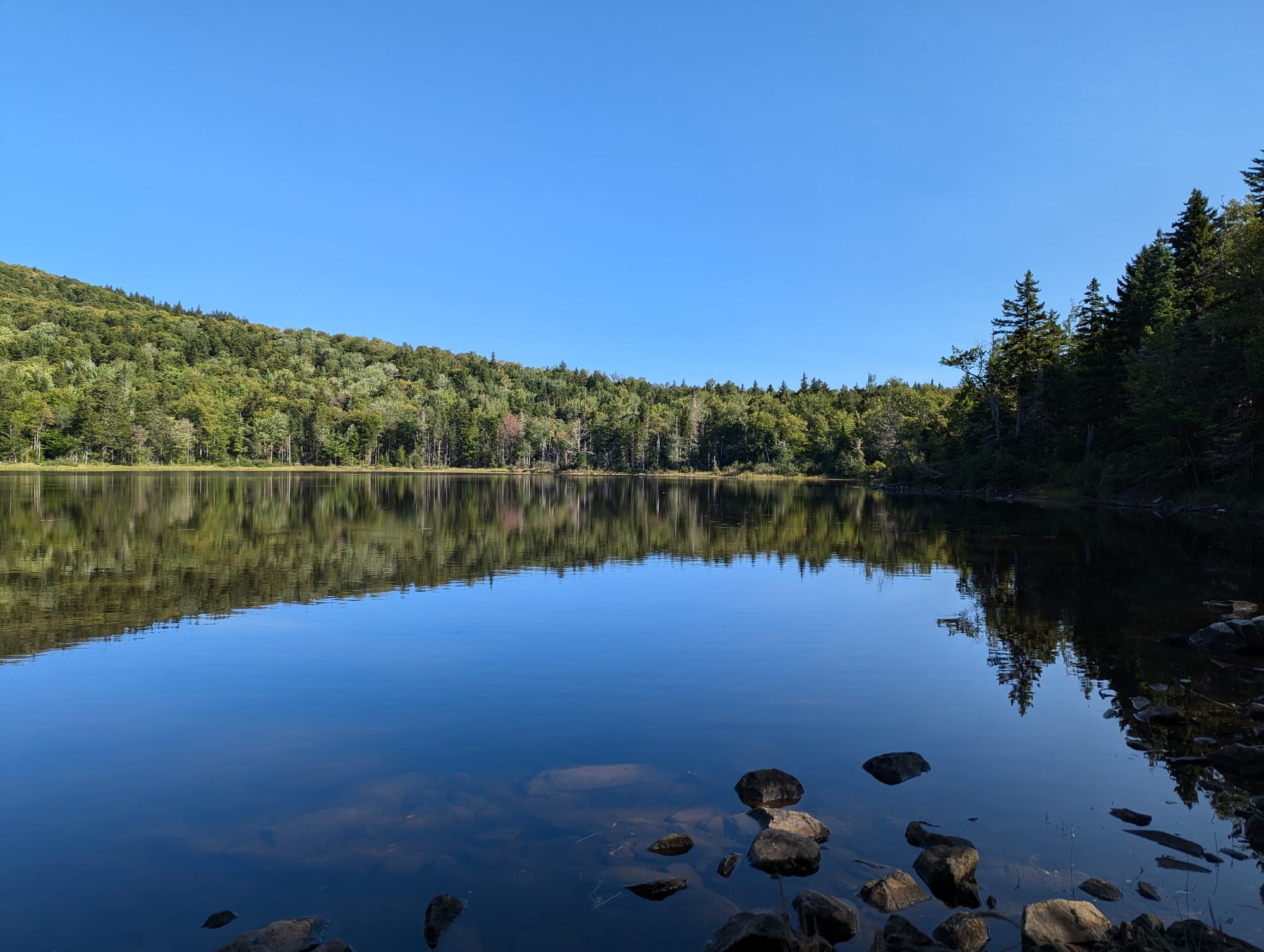Give Fee and Die
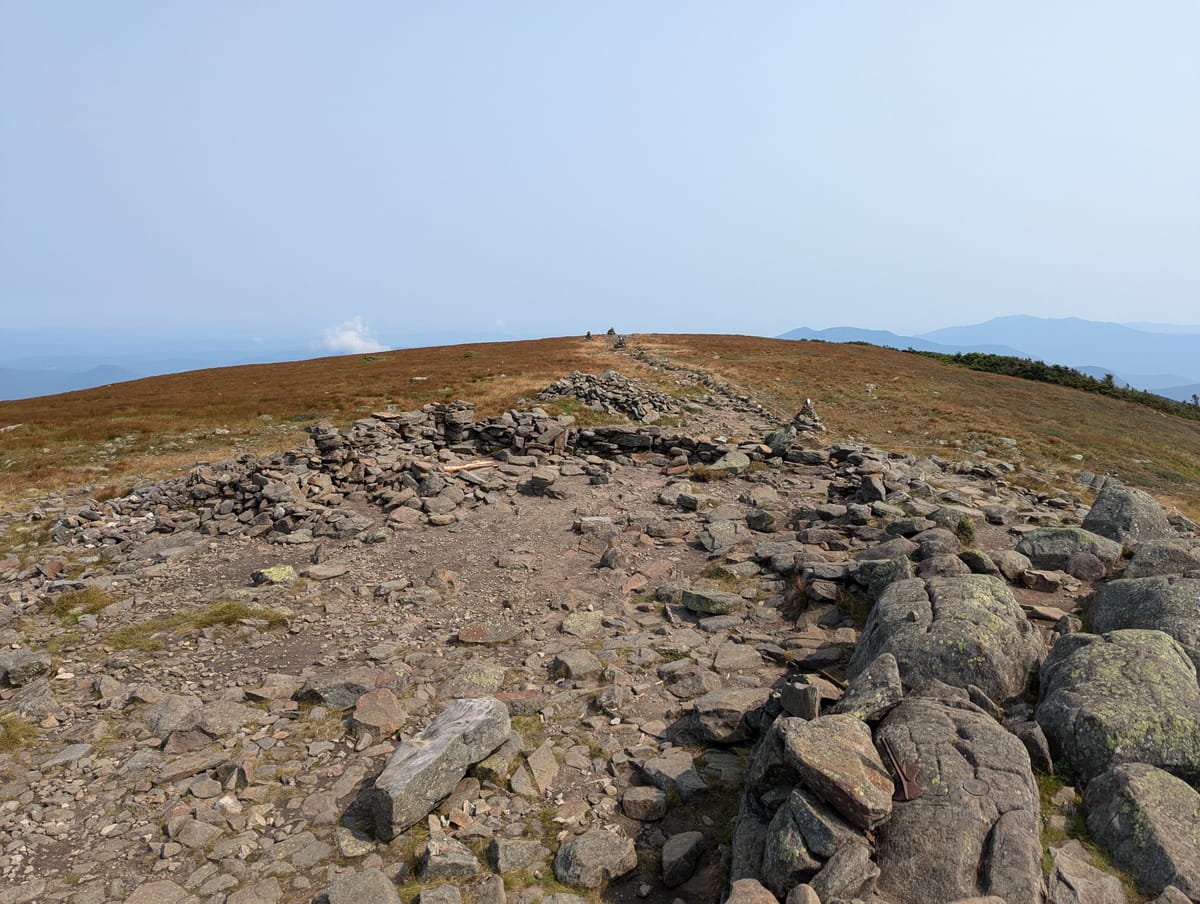
We crossed the river into New Hampshire and walked through Hanover, home of Dartmouth. We did not stop in Hanover, but I might have more to say about it later.
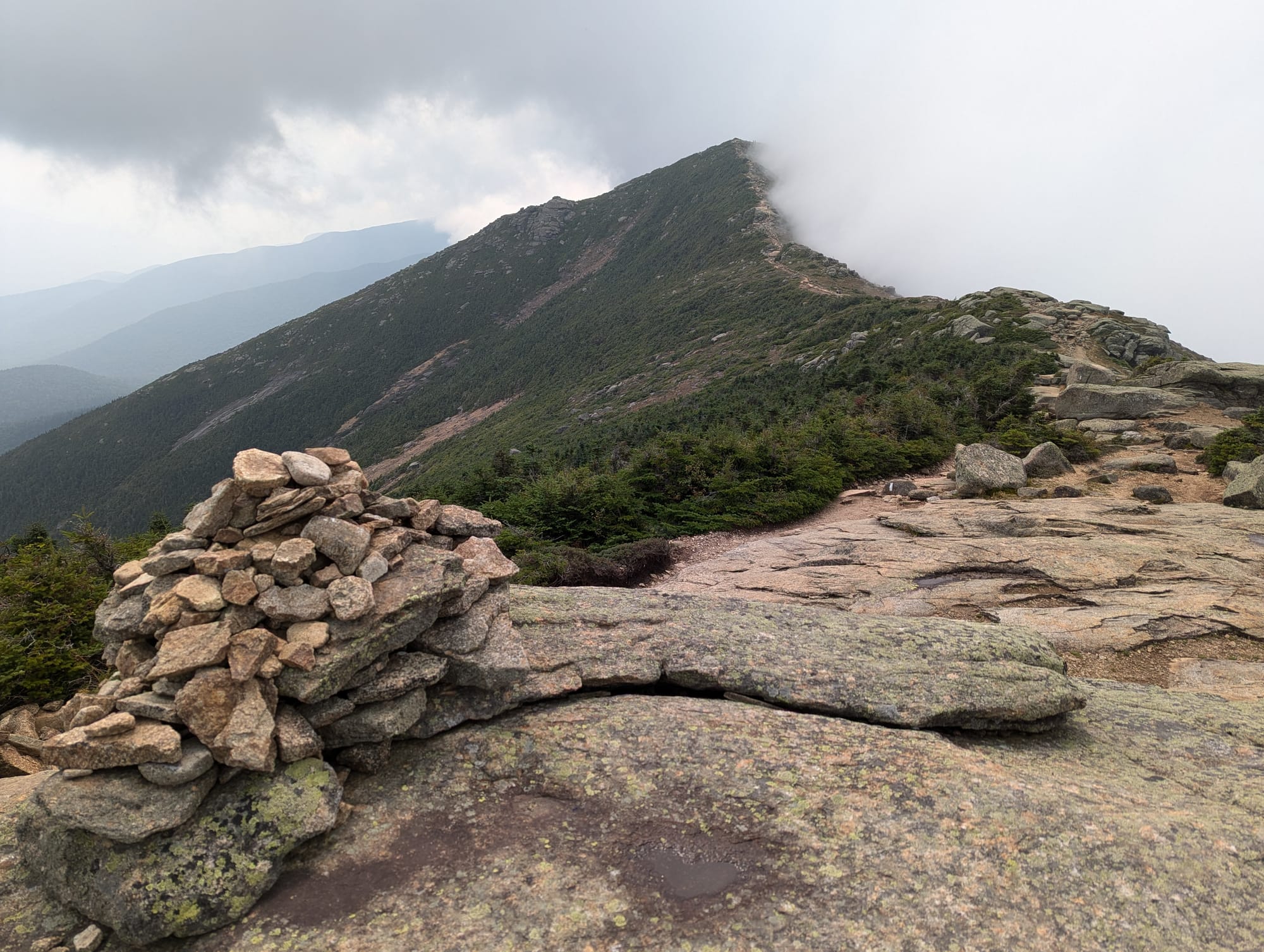
The first 40 miles of New Hampshire were the last easy miles we would see for weeks. From Mount Moosilauke to the Bigelow range in Maine, there would be no 20 mile days. Moosilauke itself was only a 10 mile stretch, but it took all day due to elevation and technicality. It was more climbing than hiking, and this was the theme of the Whites.
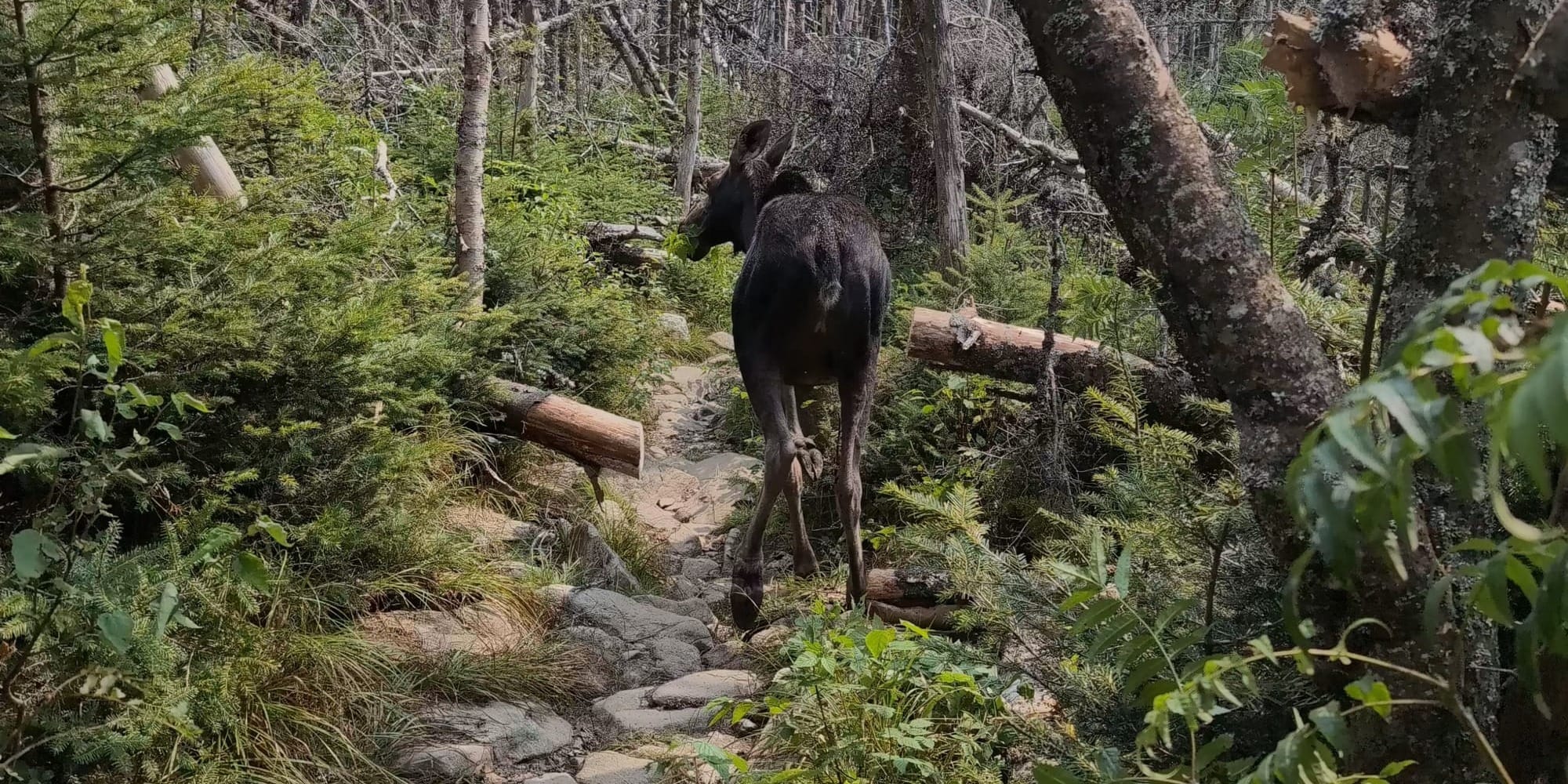
We did see a moose on Moosilauke, though. It was walking down the trail, munching on everything, and paying us no mind.
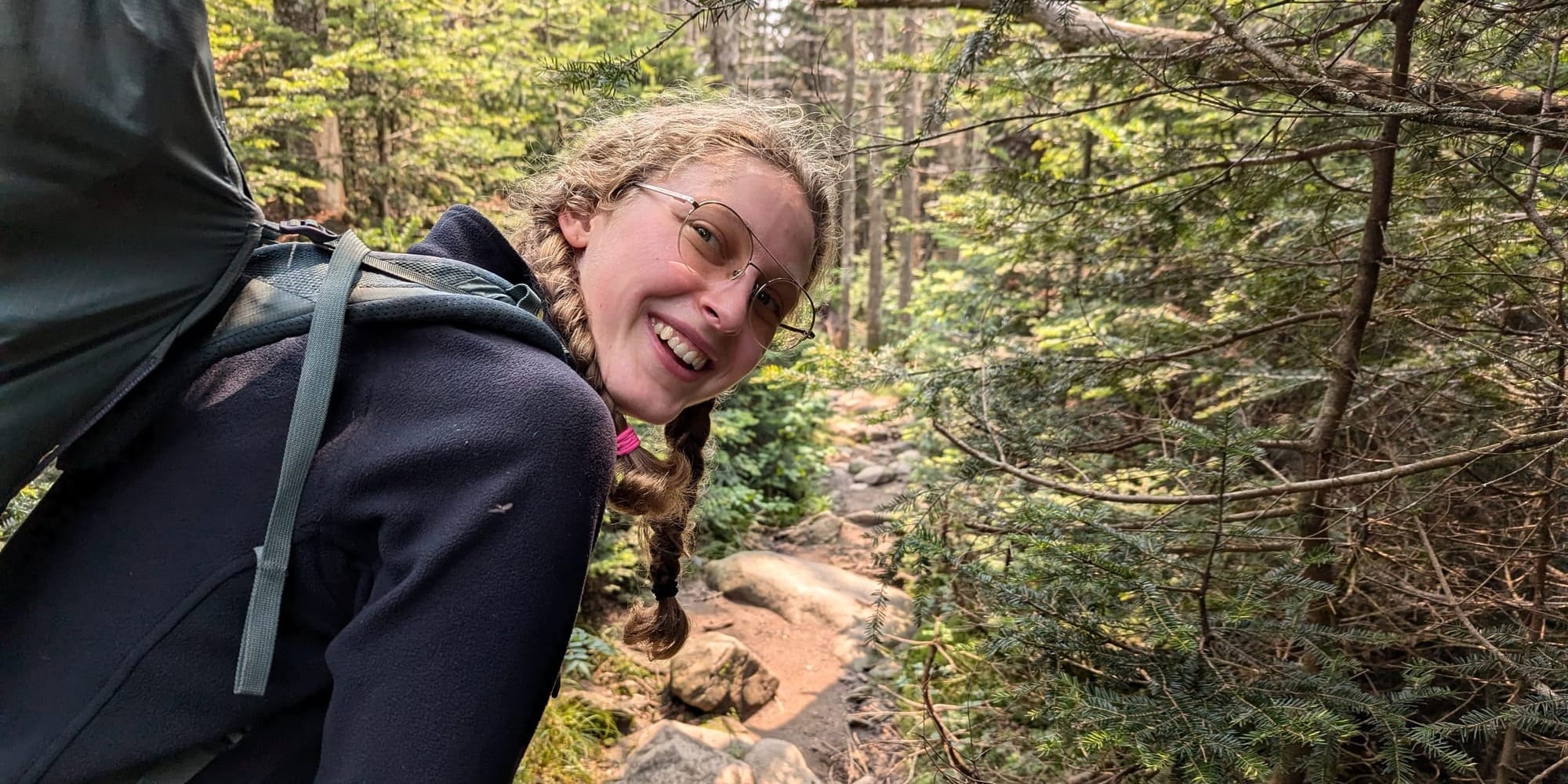
Tropical Storm Ernesto was blowing through while we were preparing to walk up from Crawford Notch towards Mount Washington, so we took a day off to avoid it. Soon we found that one day wasn't enough.
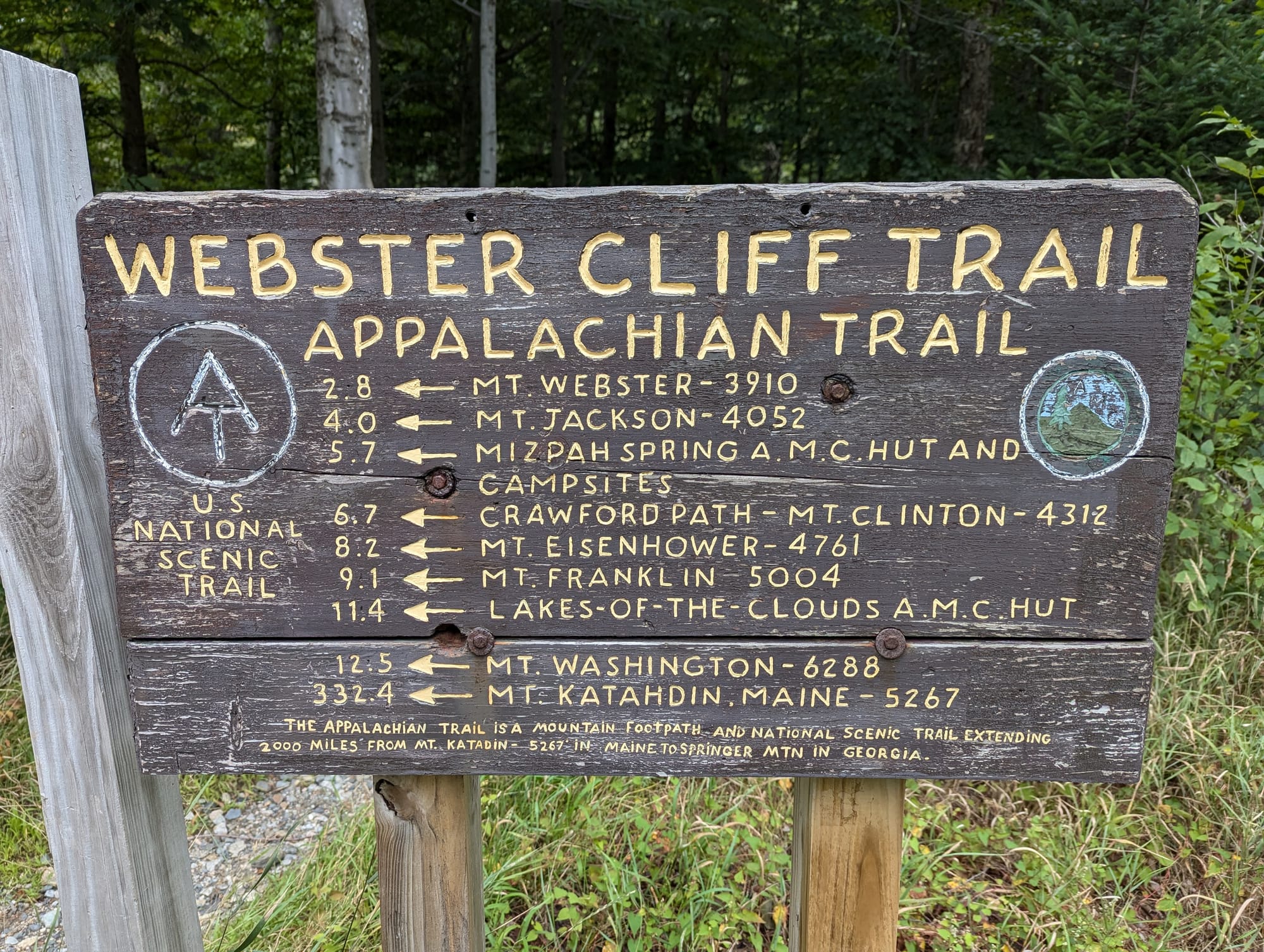
Mount Washington is notorious for extreme weather. The highest wind speed on earth, 213mph, was recorded there. The summit observatory publishes a specific forecast for the higher summits. On the day we left Crawford Notch, the weather was projected to be 25mph+ winds and 40 degrees, causing freezing wind chill.
We stopped about halfway to the summit at Mizpah Hut, still sheltered by the trees. It would have been wise to stop here and wait for better weather, but we chose to press on to Lake of the Clouds Hut. It was 5 miles, and 4 of those miles above treeline.
As soon as we got above treeline, the full weather hit us. Unrelenting sideways rain forced us to take off our glasses and traverse the rocky trail on near sight. I stopped behind a rock to put on my gloves, but by then my hands were so swollen from chillblains I could barely get them on. Strider was beginning to feel hypothermia coming on, so we ran the last mile to the hut.
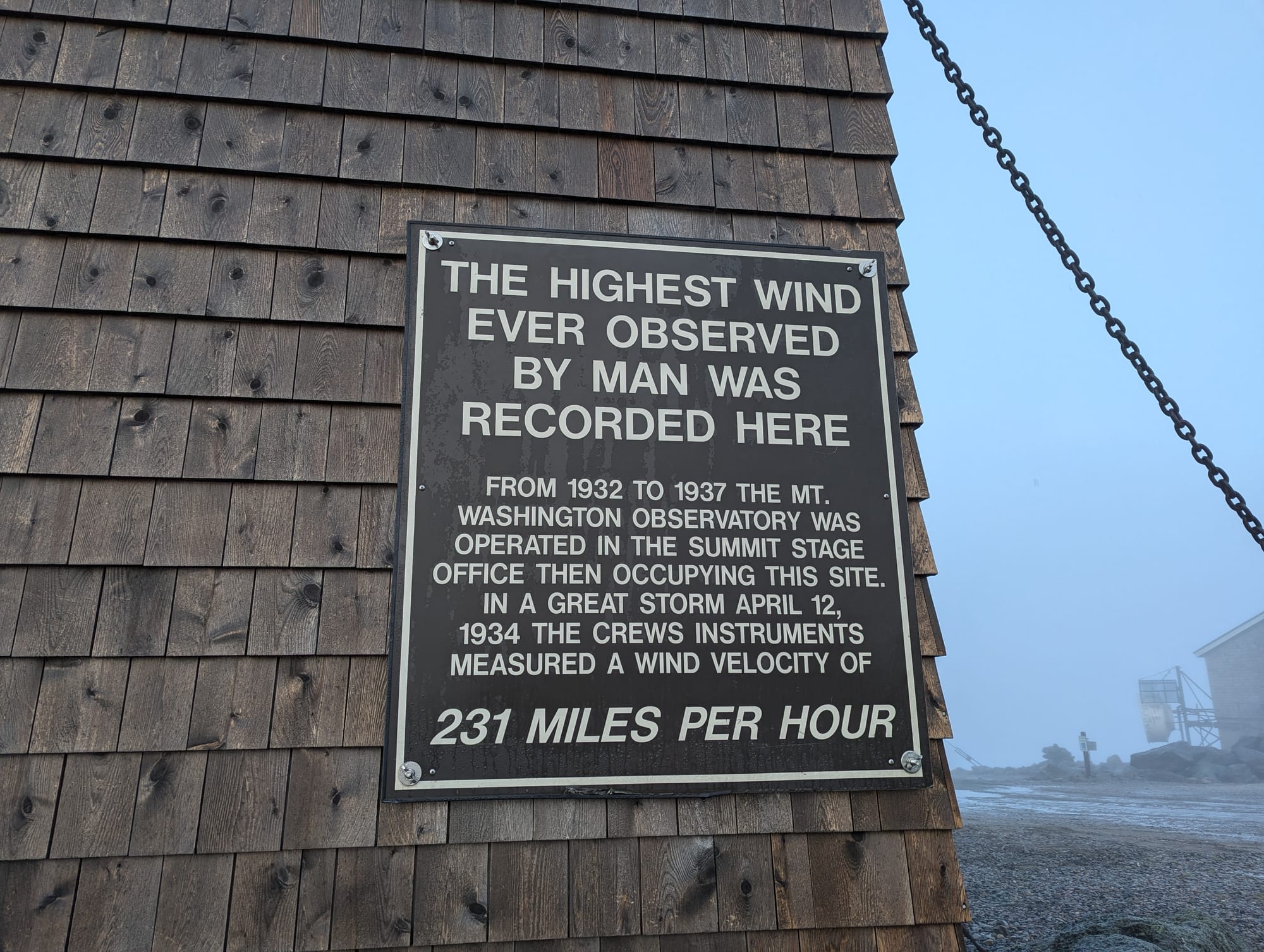
The AT including all official camp sites in the majority of the White Mountain National Forest is maintained by the Appalachian Mountain Club (AMC). This club has a reputation with thru hikers, who prefer to call it the Appalachian Money Club.
In addition to the typical arrangement of shelters and tent sites along the trail, the AMC operates a series of huts. An AMC hut is a fully enclosed structure with a kitchen, dining area, composting toilets, and bunks. It costs a minimum of $100 for a single bunk in a hut, which includes breakfast and dinner. The hut workers carry in most of the food and supplies, while heavier things like fuel are brought in by helicopter.
The huts exist for tourists. The bunks are booked in advance and outside the budget of most thru hikers. There are scant opportunities for thru hikers to do chores at a hut in exchange for sleeping on the floor and eating leftovers.
The AMC's regular shelters and tent sites, which don't appear to be any different from others on the trail, have a minimum $10 fee per person. Somehow this trail club, with their operating budget large enough to include helicopter supply missions, can't figure out how to make shelters and tent sites free when every other club on the AT can.
The trail maintenance in AMC territory is also some of the shoddiest on the entire trail. We encountered mud pits and bogs without the expected means to get through them, like stepping stones or boards. Hikers resort to blazing their own path around these hazards, trampling a much wider swath of vegetation than necessary. Getting your feet wet is not viable at high altitudes in the Fall when most NOBO thru hikers are in New Hampshire. Again, every other club on the trail gets it done.
So after our death march up to Lake of the Clouds Hut, we changed into our dry clothes and loitered in the dining area until dinner time. We were evicted from the tables for the tourists to have a nice hot dinner. We paid $10 per hiker to stay in the "dungeon", an emergency shelter bunk room in the basement converted into a profit center. We went back out into the wet freeze and around the corner to enter the dungeon, where we did our best to dry out our clothes and sleep in the cold and damp room.
The next morning, the summit forecast was similar to what we had just experienced, except 10 degrees colder and with lightning storms in the afternoon. Since we weren't allowed to stay in the dungeon again, we had to either press on to the summit or 10 miles backwards to the previous notch. We opted to hike up to the summit of Mount Washington.
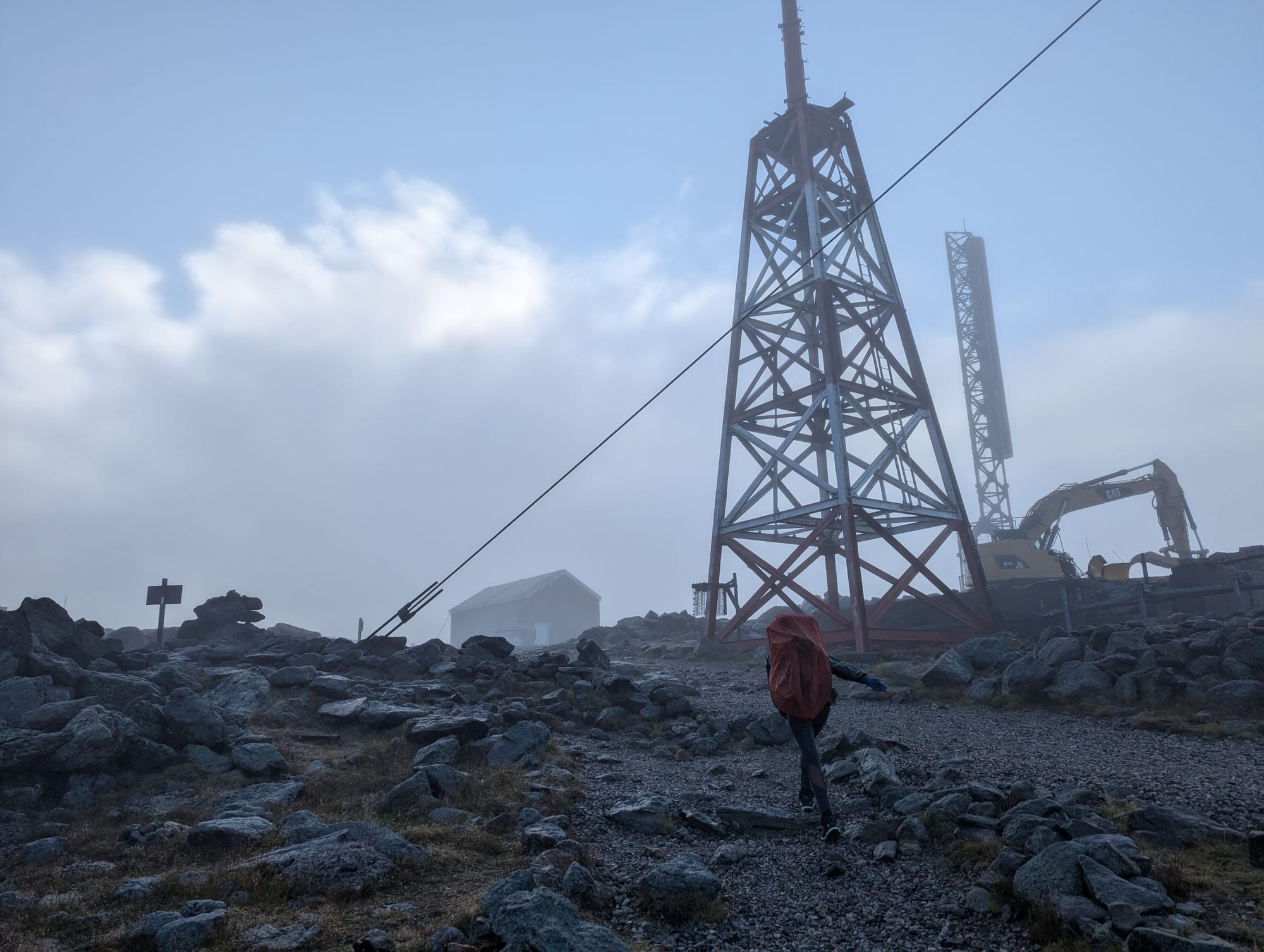
Mount Washington is different from most of the summits we have conquered along the trail. There is infrastructure at the top: an observatory, visitor center, shuttle service, and a parking lot. We arrived before any of the services opened and took our summit photo on the pile of rocks in the corner.
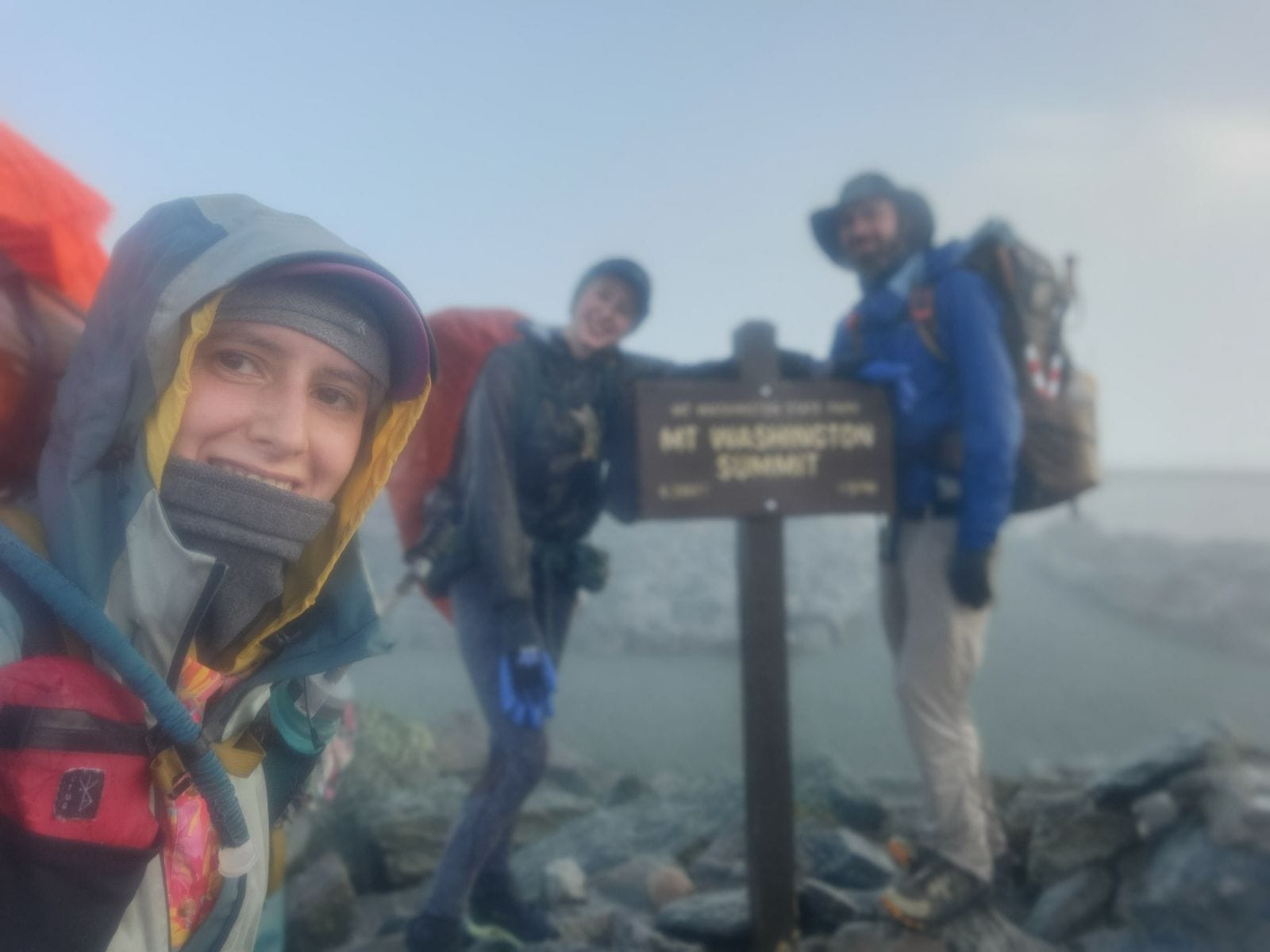
Because thunderstorms were forecast, the sideways rain was even colder that day, and we would have been above treeline for a very slow 8 miles, we bailed out from the summit and walked down the road to get to shelter faster. After a 6 mile road walk we rejoined the AT and hiked down to Pinkham Notch to dry out at the visitor center.
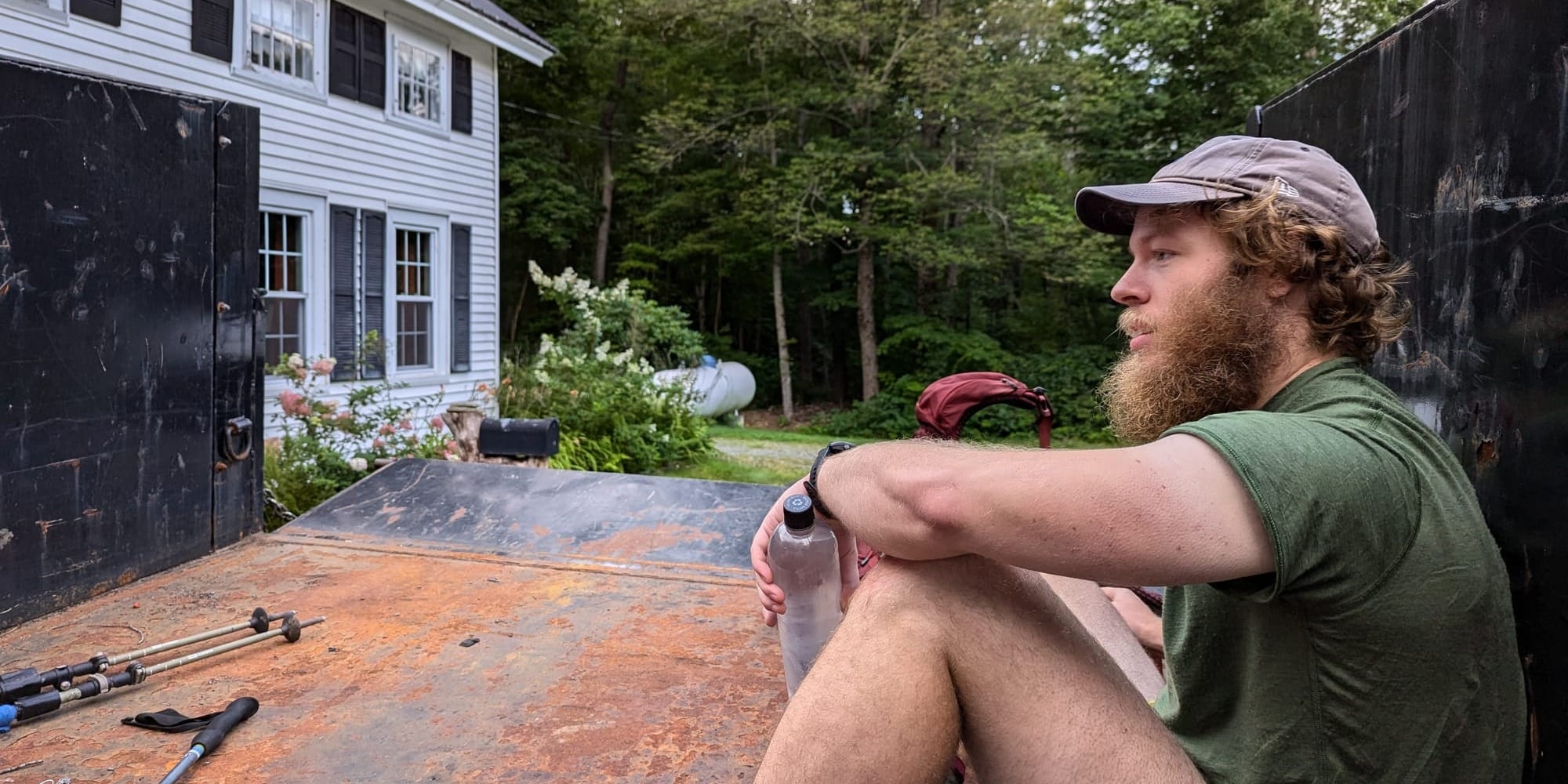
Some AT hikers chose to continue across the trail from Washington that day. One of them, named Stillwater, found a dead body. A 72 year old man had taken the train up and started walking down the AT. He was wearing blue jeans, a shirt, and a rain jacket in weather that had almost caused us hypothermia. As hikers say, "cotton kills".
It's hard to know how this could have been prevented. Mount Washington is the deadliest mountain in the world per foot of elevation, yet you can take a train or car directly to the top and start walking. You might think someone on either end of the railroad would notice this man was going out into deadly weather unprepared. Then again, the motto of New Hampshire is "live free or die". Or, in the case of AMC, "give fee and die".
After our Mount Washington misadventure, we were physically wiped out. Strider caught a bad cold that lasted a couple weeks, and my legs were impacted by running to Lake of the Clouds. My hip still hurts even after Katahdin, a month later.

Many people we met on trail were critical of the AMC. Personally, I feel like they are poor stewards of their section of the AT. How can an organization where the CEO makes $1.25 million a year fail so completely to organize volunteers to do trail maintenance in one of the most iconic regions?
It wasn't all bad, though. We got some nice views in the rest of the state.
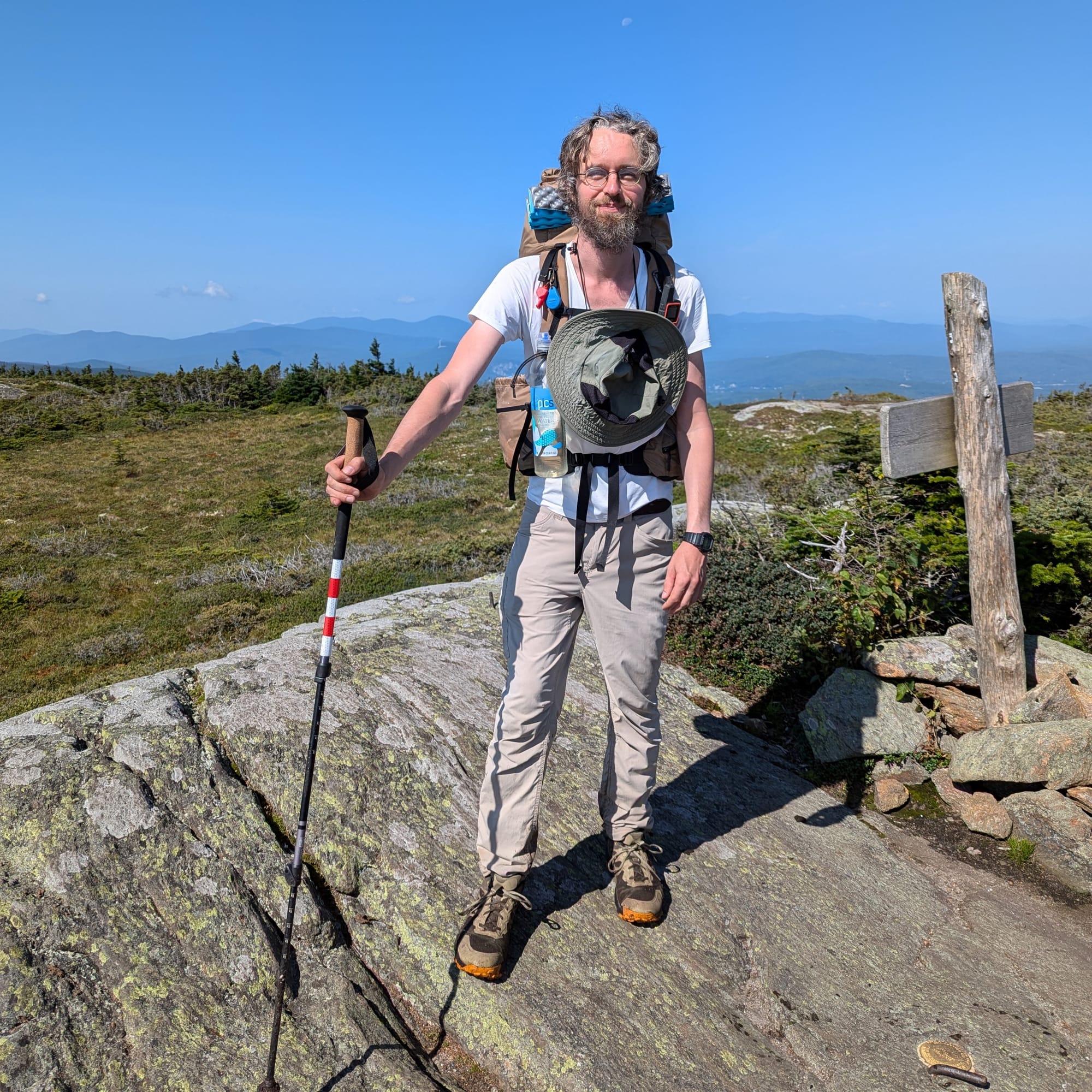
As a parting gift, as we approached the last summit of New Hampshire, Strider slipped off a broken bog board and went thigh deep in a mud pit. Nobody gets out of New Hampshire clean.
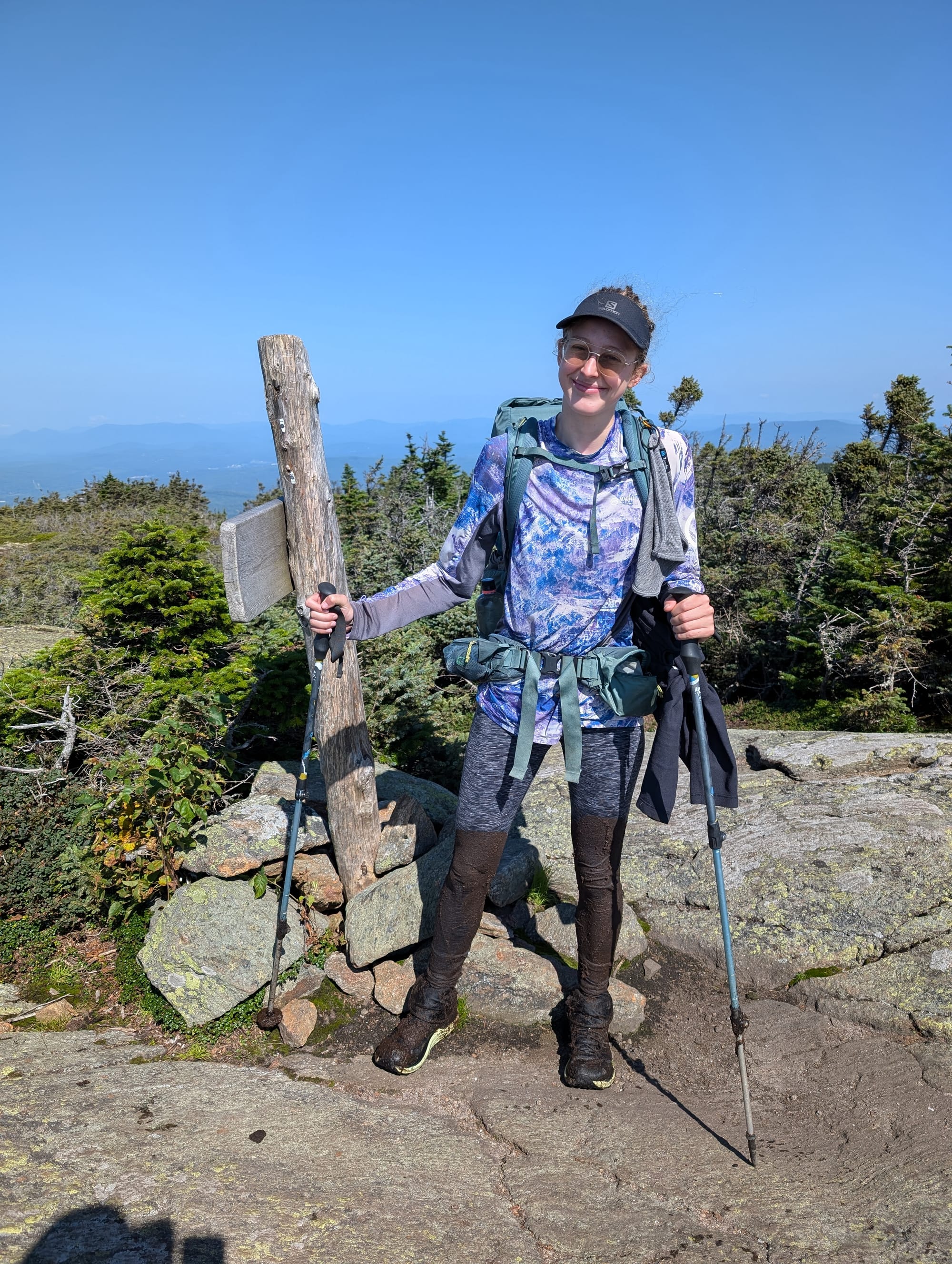
Finally we left AMC territory and hiked into Maine AT Club trails, which reminded us that people care about the trail.
